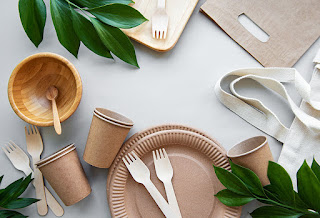Biodegradable Packaging Contributes To Greener Earth Where No Landfill Waste Is Generated and Carbon Footprint Is Minimal
Some companies have already developed biodegradable packaging from cellulose, using a combination of sugar and resin-based resins. This has been shown to have some commercial potential. However, it is still too early to say whether the cellulose-based food packaging can replace the traditional food packaging.
The advantages of biodegradable packaging would be that it is completely biodegradable, therefore contributing to a greener earth where no landfill waste is generated. The biopolymers used to make the food packaging do not add any extra load on landfills, because they break down into smaller particles that are naturally excreted. This also means that the carbon footprint of the biodegradable food packaging is much lower than that of traditional packaging
There are several companies that manufacture a variety of different biodegradable packaging from various sources. The companies have introduced alternatives to plastics. One of the challenges facing the industry is the speed in which polymers break down. It takes between five and ten years for the polymers to degrade in a natural way. Companies that are developing these new packaging materials are working hard to speed up the degrade time. An advantage that has been provided by the increased speed of these polymers is that it means that the surface area of these materials can be expanded, providing more surface area for food to be packaged using.
Some of the best examples of the new types of biodegradable packaging include those created from starch. Biodegradable starch will break down into sugars rather than degrade into simpler materials, like lignin, which can break down into matter that is more complex in nature. There are two ways that biodegradable polymers can be made, by physical processes, such as through chemical means or by mechanical properties, such as through heat. A recent discovery by scientists involved with the study of mechanical properties of sugars led to the discovery of bio-based cellulose.
This is another example of how biodegradable packaging is a sustainable product. It can be used to create an environmentally-friendly packaging solutions. There is a growing trend within the packaging industry to develop new, more sustainable materials that are friendly to the environment. Biodegradable packaging is one of the ways that bioplastics are being developed and used. These materials are not only friendly to the environment, but they are also more cost effective than their traditional plastic alternatives.
Various companies are focused on developing unique ways of using biodegradable plastics in their food packaging. The biodegradable plastics will be inserted into individual airtight plastic bottles, which will help them maintain their shape while still being safe for the environment. The air that is trapped inside of these bottles will help to slow down the rate at which oxygen is absorbed by the plastics. Because of this, less plastic waste will be created. This, in turn, will have a positive effect on the environment. It will take a longer period of time for the biodegradable plastic bottles to degrade; therefore, the amount of plastic waste that is produced will be reduced.




Comments
Post a Comment